Restoring a black marble clock caseby Ian Beilby, UK
Download a pdf of this article
The photographs in figures 1 and 2 show what remained of a clock which was described by a dealer friend of mine as ‘just what I was looking for’. Well, there was some truth in that, as I am always on the look-out for clocks to restore, and this clock certainly would benefit from some restoration.
Apparently this was the second time the dealer had handled this clock, but the first time he sold the clock the case was complete and the movement had a dial. The movement and case had then only required cleaning and the clock bought by an aspiring repairer who wanted something not too expensive or challenging on which to work. Somewhere along the line something had gone badly wrong, resulting in both the top of the case and the clock dial both being broken beyond repair. Both these items had unfortunately been thrown away.
The would-be repairer decided that clock restoration was not for him, and approached the dealer with a view to trading in the remnants of the clock in part payment for another clock that did not need restoring. The owner lacked the confidence to re-assemble the movement (which was probably as well) and the movement was given to me as shown in figure 2.
Before I made a decision as to whether the clock was, in fact, ‘just what I was looking for’ I went through all the component parts of the movement with a fine tooth comb looking for damaged or missing parts. Fortunately apart from one or two missing screws everything that mattered was there.
It would appear that the movement had been competently dismantled, but then some accident must have befallen the dial and case, disheartening and putting off the previous owner from doing anything else.
French black marble clocks are still very underrated by clock collectors and the general public alike, hence they are relatively cheap clocks to buy and can be prone—as here—to abuse or neglect. Despite this clock’s lamentable history and its present appearance, I knew this had been a quality clock and I wanted to restore the case and movement if possible.
From the style and dimensions of the case alone I knew the clock was quite early, and the silk suspension and escapement confirmed this. Although the dial was missing the movement was signed on the back plate ‘Raingo Freres Paris’, a quality Parisian clockmaker. Z Raingo founded the firm in the 1820s, figure 3.
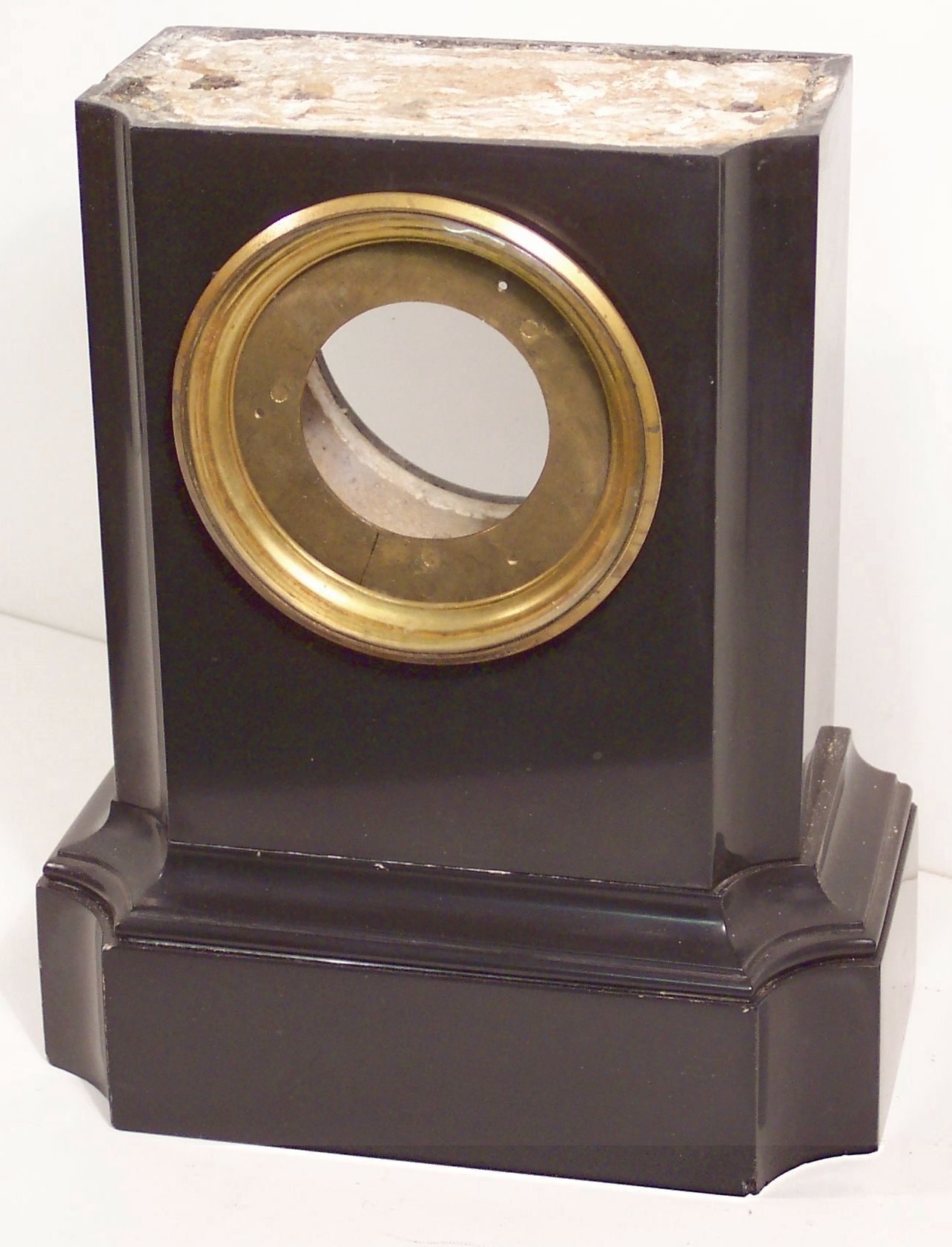
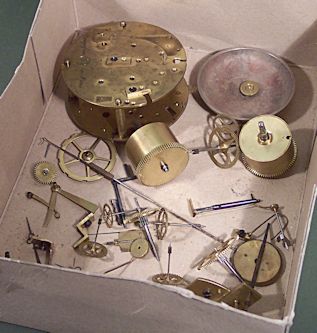
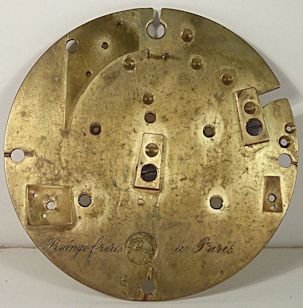

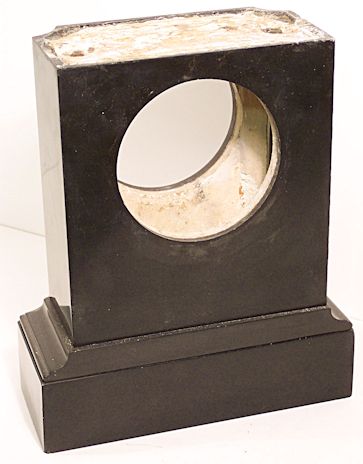
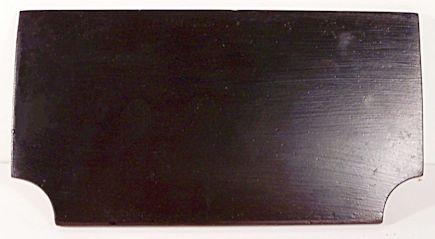
French movements with silk suspensions are very rare in black marble clocks. They are, however, frequently found in other types of case design up until around the 1860s by which time the sprung steel suspension had taken over. The vast majority black marble clocks date from around the 1850s onwards, so this is an interesting early example. The dial bezel is quite plain and pronounced, as is typical with early movements, and still contains its original bevelled glass.
The case is totally unadorned and quite tall in its proportions. This style of case was used throughout the production of black marble cases, however the later cases tended to be squatter and decorated with other contrasting marble inlays and/or gold chasing.
A look at the case in its present state as shown in figures 4 and 5 affords an interesting insight into how these cases were made. These clocks when viewed on the side table or mantelpiece can appear to be made from a solid block of marble, however this is not so. As you can see relatively thin marble panels are adhered to a core or base unit with plaster, very much like a veneer, and the base unit itself is held together with steel rods or ties bolted together.
This form of fabricated construction, although very practical, can lead to problems. If the case receives a sudden knock or jolt, or it is lifted inappropriately, the top or side pieces can become loose and break away. If any pieces or mouldings are then lost or broken, they are now impossible to replace with traditional matching black marble.
The rest of the case was in a very good sound condition, and I decided a replacement top would have to be made from thin wood, shaped and painted in a satin black paint, figure 6. Although not restored with traditional materials, when the wooden top was glued in place the case looked very much as it would have done when new, figure 7.
These black marble cases can over the years loose their shine and become quite dull or even grey in appearance. There are many recipes and formulas for rejuvenating these cases, but a product that I have used and found to be very good is Slate Blacking sold by Restoration Materials. The case is first cleaned with white spirit to remove any old polish or wax and the Slate Blacking applied with a cloth. If the case is in a very bad condition a couple of applications may be required. The case is then left overnight to dry, and finally polished with proprietary beeswax, producing a very acceptable finish. Great care should be used when handling these cases: it is all too easy for the different heavy sections to become loose if handled inappropriately. Always lift these cases from underneath and never carry them just by the circular movement aperture, as this is one of the weakest parts.


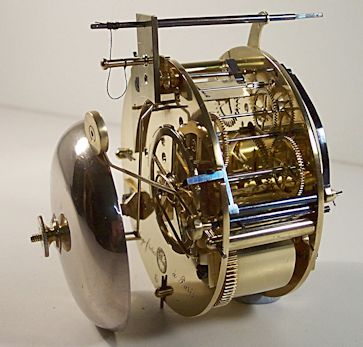
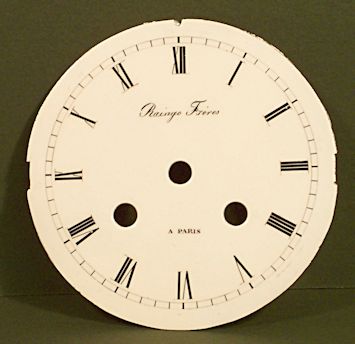
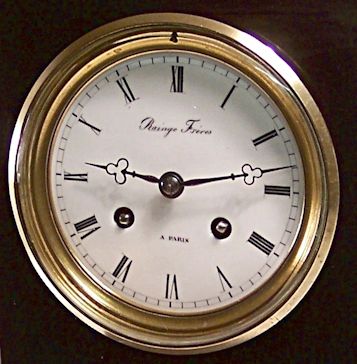
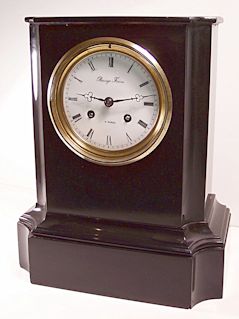
As the original dial was missing a new one would have to be made. Even though this clock was not, and never would be worth a great deal in monetary terms, I decided that as the movement was in a generally good condition, and as it was a relatively early clock, I would have a new enamel dial made as a replacement. The loss of the original dial, even though it was damaged, meant a lot of rather tricky measurements had to be taken before a new dial could be made.
The movement dial plate was sent off to Lynton Dials with an accompanying diagram giving the relative positions of the movement’s centre and winding arbors. These measurements were taken from the movement front plate.
Whilst the dial was being made the movement and plates were cleaned, the springs were removed from the barrels and inspected, and one or two pivot holes were re-bushed. The wheelwork and plates were finally polished. Figure 9 shows the re-assembled movement, and figure 10 the new dial.
A close-up of the hands, bezel and new dial is shown in figure 11. The original trefoil hands complement the dial and are another indication of an early clock. The complete clock can be seen in figure 12.
I hope readers will agree with me that this plain and very unpretentious clock has been well worth restoring, and now looks very much as it would have done when new. These French marble clocks still receive a very bad press for some reason; I personally am very fond of them and enjoy working on them. I think they are vastly underrated.
The moral of the story is clear: treat all clocks however mundane you may consider them yourself, with respect. Never attempt any repair unless confident of the outcome, and if in doubt seek expert advice, or leave it alone.
Hopefully the clock will not need restoring again for quite a number of years, especially if left alone by fledgling repairers looking for clocks to practise on. In the meantime I hope the clock will provide many years of enjoyment and pleasure for future owners and collectors.
As a footnote the clock has been restored and running for over eight months now, and is keeping exceptional time. Movements with silk suspensions have a reputation for poor timekeeping, however with this movement the timekeeping is excellent. I can only put this down to the quality and workmanship of manufacture, cleaning and lubrication.
Download a pdf of this article
|
|

